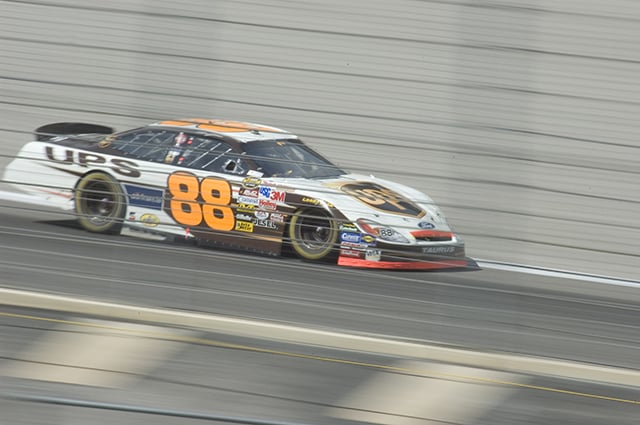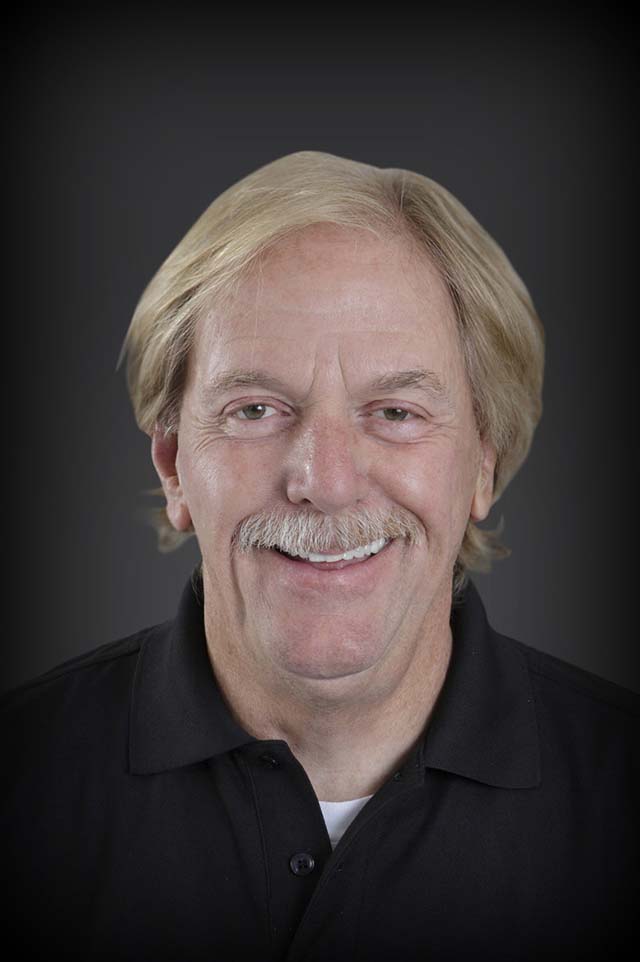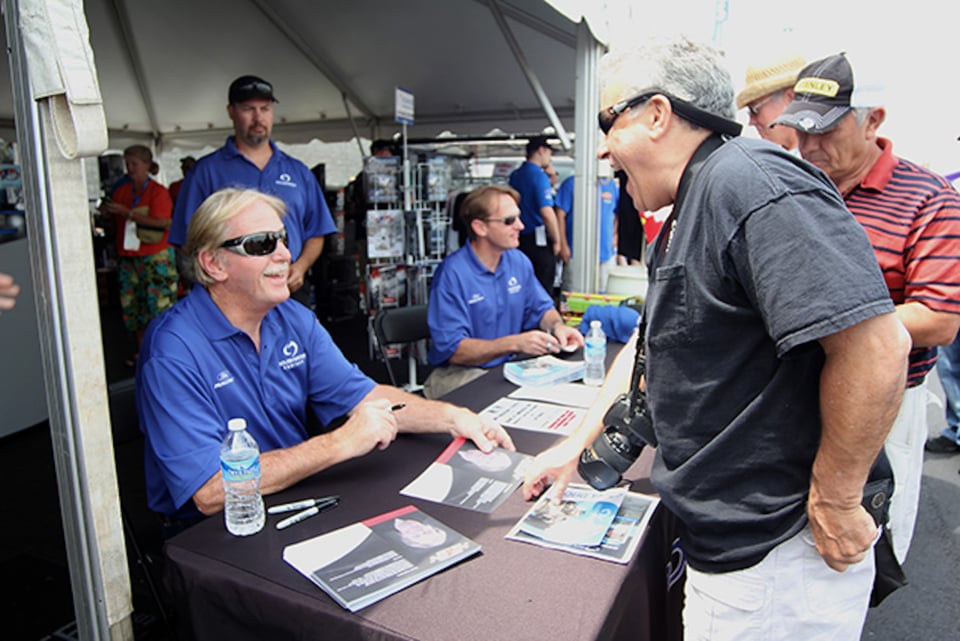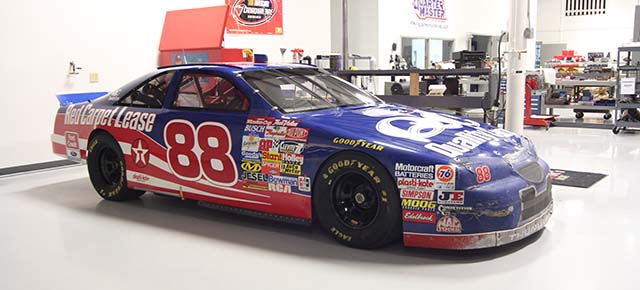
Today, Robert Yates operates Robert Yates Racing Engines, which specializes in building NASCAR Spec engines for multiple series.
Robert Yates is one of the most beloved personalities in racing. His down-to-earth manner and Southern charm, which makes many race fans feel like they know him, shadows a brilliant mind and an intense desire to win.
Many people know about Yates’ NASCAR race team, Robert Yates Racing, and the great drivers who have raced for him, including Davey Allison, Ernie Irvan, and Dale Jarrett.
But few are aware that Yates got his start at Holman Moody, that he helped Junior Johnson build a Chevrolet for that nameplates successful return to the Cup Series, or that he didn’t really want to be an engine builder, but a bulldozer driver.
We recently had an opportunity to sit down with Yates to talk about his great history in racing. Here are some of the highlights in his own words.
Childhood
I was a little bit different kid than the rest of my family. There were nine of us, and I was the ninth kid — six girls and three boys. I had a twin brother but he was born before me.
My dad was a preacher and my older brother was a preacher.
My sisters were all missionaries or into Christian work. One sister was big into home economics, teaching students how to cook and things like that. I wasn’t into any of that stuff.
I always found stuff to do outdoors, and I loved sports, but I had rheumatic fever when I was a baby and didn’t end up walking until I was 5 years old. That kind of stuck with me and even though I was good at sports, by the eighth grade I couldn’t get a doctor’s note allowing me to play.
So I ended up enjoying working on cars. That became my hobby. With nine kids my parents never had money to spare. They just didn’t have it to hand out other than school supplies and things. But that was OK because I was working on other people’s cars and always had money in my pocket.

Dale Jarrett was the most successful driver for RYR with 29 wins and the driver’s championship in 1999.
Getting His Start in Racing
I was working at Western Carolina Tractor Company, working on bulldozers. To me that was a glamorous job. I had always wanted to operate bulldozers and build roads and things like that. I wanted to be a civil engineer, so I was going to college and working on tractors in the evenings. I couldn’t afford to go to school and not have a job.
So I got a phone call from a guy I knew that worked at [NASCAR racing team] Holman Moody, and he said, “Hey, they are trying to find somebody to hire that’s got some math in college. You told me about the courses you’ve taken, and they are trying to find somebody to hire like that.”
I thought, “Well, I’m not that good at math,” so I didn’t even think about going to the interview. But really, I had a plan. I was going to be a civil engineer.
I go to work the next day, and I told a guy I worked with about the phone call. He’d been trying to get a job there forever. He was a big Ford nut, and he said, “You can’t get a job there.”
Don’t ever dare me on something! Because he said I couldn’t do it I went to that interview. So I went out there, and they walked me through the shop.
Jack Sullivan, who was Fred Lorenzen’s crew chief, was running the shop at the time. He showed me some of their equipment and had me measure some cranks and rods and bearings before they went to the engine builders.
When we got done with that he said, “What do you think?” And I said I didn’t know, I’d have to think it over. So then he told me they could start me out at $4.50 an hour, and [at the time] I’m making $1.60!
You earned your money working at Holman Moody. They worked from eight in the morning to 10 at night, and Saturdays and Sundays quite often, too.
But everything over 40 hours was time-and-a-half. So I go back to the bulldozer shop and told him about the offer, but that I hadn’t made up my mind. My service manager was a great guy and a big race fan. He told me, “I’ll kick your butt if you don’t take that job!”
So I took the job and I never looked back. And that was the best education anyone ever could get.
John Holman
John Holman had a reputation for being pretty ill tempered. One night I was running three grinders, grinding connecting rods. It was probably 3 o’clock in the morning. I heard this voice, and I knew it was John Holman.
I’d heard him chew people out before, oh my goodness he was like a bear! He’d scream at someone right in front of everybody, and I’d always think I don’t think I could take that.
Well, now it’s my turn. And he’s screaming because one of my machines was running over with some oil and there was oil on the floor. There was hardly nobody in the machine shop that night, and I panicked. I was trying to get it all cleaned up.
Well, he saw the oil before he saw me, and as soon as he saw me he quit yelling. I was going around trying to get the oil cleaned up and he said no, we will get (the cleanup guy) to do it.
And then he stayed there and talked to me. I was trembling, because I just knew he was going to fire me. But what he told me that night I’ll never forget. He said, “I wasn’t born a son of a bitch, it’s people who made me one.”
After that he was so good to me. Holman Moody was a great experience, getting to work on engines and grinding and porting heads. That opportunity really helped me understand what makes engines tick.
Racing a Chevrolet
At the time there wasn’t a Chevrolet in Cup. Richard Howard, who was actually in charge of Charlotte Motor Speedway back then, told me he was concerned nobody was coming to the track. He told me his plan, and I told him they needed a Chevrolet.
He said, “There’s not one.”
So I said, “Get me some money and I’ll build you one.” I was still working at Holman Moody, but they had scaled back and I had plenty of time. So I took my old dirt car, which was a Chevrolet, and took it up to Junior Johnson and built the car that went to Charlotte.
I’d work at Holman Moody during the day and then go to Junior’s and work on the Chevrolet at night. But it worked, the fans in the stands went from 30,000 to 65,000, just from that competition between Ford and Chevrolet. That was 1971 and LeeRoy Yarbrough was the driver.
Hiring a Hippie
I worked for Junior Johnson for five years after I left Holman Moody. I was always an admirer of Junior’s. As a driver, he never just rode around, he always drove hard. So I moved up to Wilkesboro [North Carolina] and ran the engine shop there.
I was working day and night. I worked probably a hundred hours a week. So I was trying to hire Harold Elliott, because he had experience, and I was desperate for help.
I was building something like 10 to 12 engines a week and working all the time. The only aftermarket part on the engine back then was a Crane rocker arm. Everything else was stock, so we had to modify just about everything to make it work for racing.
But Harold had long hair and looked like a hippie. Flossie [Junior’s wife] said, “You are not hiring that hippie.”
So I called Harold and said would you mind cutting your hair off and come back up here? So he cut his hair and came back, and they didn’t know it was the same person! So Harold came to work for me and he was a huge help. But we still worked some crazy hours.
A week at DiGard
I had left Junior’s and gone back to Charlotte where I had a house. I wasn’t going to the races on the weekend so I could be with my family more.
I was working for a guy named Parky Nall building engines for race teams, and I built an engine for DiGard right when Darrell Waltrip got there.
Well, he went out and won his first race with that engine, and then Darrell wouldn’t leave me alone. He came back and said, “You’ve got to come down here [to DiGard, the team he was racing for].”
I had agreed to work with Parky for one year to help him get his deal set up, and my year was up. I had plans to start my own deal, but I told Darrell, “I’ll come down there to help you for two weeks, and then I’m going to come back and start my other project.” I had plans to start my own shop with an investor.
So Darrell said OK. I had about a $100 truck and I didn’t think it would get me from Charlotte to Florida where the DiGard shop was, so I borrowed my wife’s car. I put my toolbox in the back seat and drove down to there.
When I pulled up to DiGard, Lou Larossa met me. I said, “Where is everybody at?” And he said, “We fired ’em all because you’re coming.”
I said, “I’m coming down for two weeks, I’m not coming here forever!”
I ended up there forever. I stayed there 10 years until 1986.
The Yates Head
Because of my education at Holman Moody, and the fact that they weren’t afraid to cut up and move stuff around, I got a pretty good understanding of what an engine likes.
I was always trying to make an engine that was easier to work on and made good power.
When I started working on the Ford engine it had brackets for brackets. A lot of nuts and bolts, a lot of stuff, and a lot of extra weight. You couldn’t hardly change a manifold. You could change an engine in the amount of time it would take you to change out a manifold.
So I cleaned it up to where I could pull the manifold off without pulling other parts off, just made it simple. You wanted to be able to change the manifold, because you can move the torque around with different manifolds and how they are ported. So you needed to be able to change it just about as quick as the carburetor.
I learned a lot of stuff by chasing an idea until I could prove it. If I couldn’t prove it, then I turned around and went the other way. I think a lot of guys missed out, because if they couldn’t prove an idea they just gave up.
I was chasing the idea of how to make an engine work efficiently with a flat-top piston, because it just took forever to make a domed piston. We didn’t have CNC machinery back then, and you had to do everything by hand. It was just aggravating because it took up so much time.
We had a flat-top piston and were working on the cylinder head to work with it. I was working on the flow bench one night and the intake port was going right where the pushrod needed to be, so I ran a tube through the port for the pushrod to go through, which was common to do back then. I noticed that it was causing the air and fuel to separate right there were it hits the tube. I thought, “I’ve got to get rid of that.”
So I made a set of heads with straight walls and nothing in the way. I ended up putting an engine with the new heads on the dyno about 11 o’clock one night and made a pull. And just listening to it I thought something was wrong, my dyno is messed up. I’m making 700 horsepower and back then 650 or 660 was the average.
So I made another run, and it did it again. I put another engine on the dyno, and it made 660. Put this thing back on and 700 again. And by the way, it likes 28 degrees of timing and everything else was running 34 degrees. So I’m thinking it’s got to be a better engine.
We took this new design to the track and we’re just kicking their butts. But it was only a matter of time before NASCAR noticed.
They ended up taking our engine and one of [Rick] Hendrick’s engines after the spring race at Michigan, I think. That really hurt because I only had three or four engines at the time! They took a lot of time to build, because they were so different. The heads, we would weld solid, and then re-cut them the way we wanted them.
Then when we went to Daytona for the July 4 race NASCAR called me into its room. So Bill France, in his wisdom, he said, “Nice engine. It looks good, but the only way you can run it is if everybody has it. That’s the only way it is going to be fair for everybody.”
I knew it was coming. I had seen him do that before. So I said, “Well, we can make that happen. In fact, I’ll write a book on it. I’ll tell you what cam and what piston and everything else.”
So he said “OK, we will make it legal.” Some of the other teams had already seen my cylinder head, but that’s how all the Ford teams were able to start running it.
Starting Roush Yates Engines
We were in Atlanta when they announced that Toyota was coming into NASCAR. It was a Saturday morning, and we were all standing there watching the announcement in the garage. So I walked over to Jack [Roush], tapped him on the shoulder and said, “We need to talk. I’ll see you at your motor home in 10 minutes.”
So I went down to his motor home and he was there. I said, “Toyota is going to throw the money at racing, and they are going to kick butt if we don’t do something about it. We better gang up.” And he said, “I agree with you.”
So I said, “All right, you write out 25 things that you want, and I’ll write out 25 things that I want, and tonight we will compare them.”
That afternoon I wrote out the 25 things that I thought we should do, and when we got together again we compared our lists and 23 of the 25 were right on the money. We think so much alike I couldn’t believe it.
 So we talked about it some more and worked out some other issues and decided to go into business together building engines.
So we talked about it some more and worked out some other issues and decided to go into business together building engines.
I called it “to the dirt.” In other words we were in business to the dirt — no half deals about it. We went in 50/50 on it. He paid for half of everything: the equipment, the building, and even the dirt underneath it. I paid for the other half. That’s how we went into business.
So we combined what we learned to help our engine program. No secrets. We were making good power, and he had invested a lot into lightweight rocker arms and other valvetrain pieces. He had an engine that would spin up to something like 13,000 rpm.
It was good for both of us — and it was good for Ford. They didn’t need to be spending money in two different places, and we didn’t need to be fighting each other.
We were already in Charlotte, and Jack was already considering moving his engine program to Charlotte, so it made sense to be here [Roush Yates Engines is located in nearby Mooresville, North Carolina].
It is to our advantage to be in Charlotte. We have engines apart sometimes before people are out of the grandstands. We have guys coming in to start the teardowns all the time at three in the morning. That just gives you another day before the next race for you to look at what’s going on and see if anything needs to be changed.
It’s been a good deal.



















